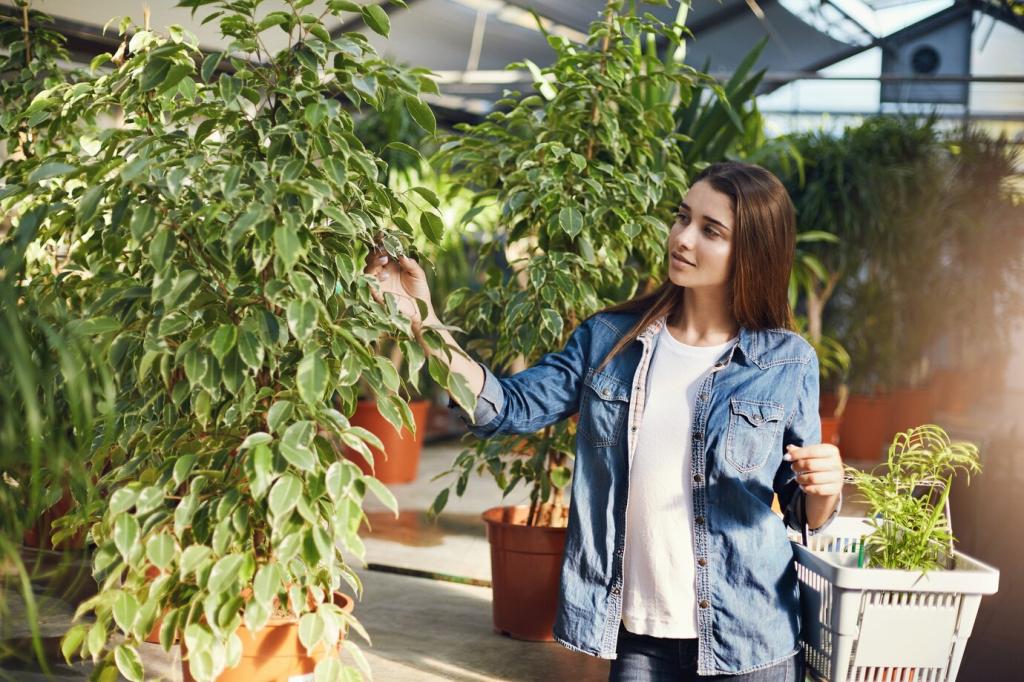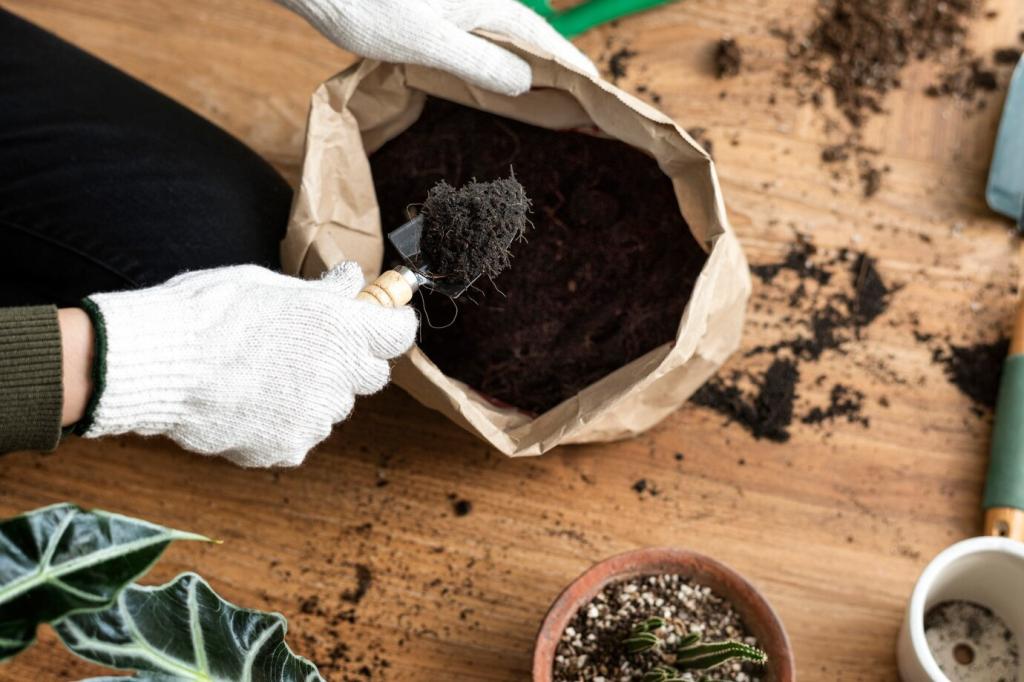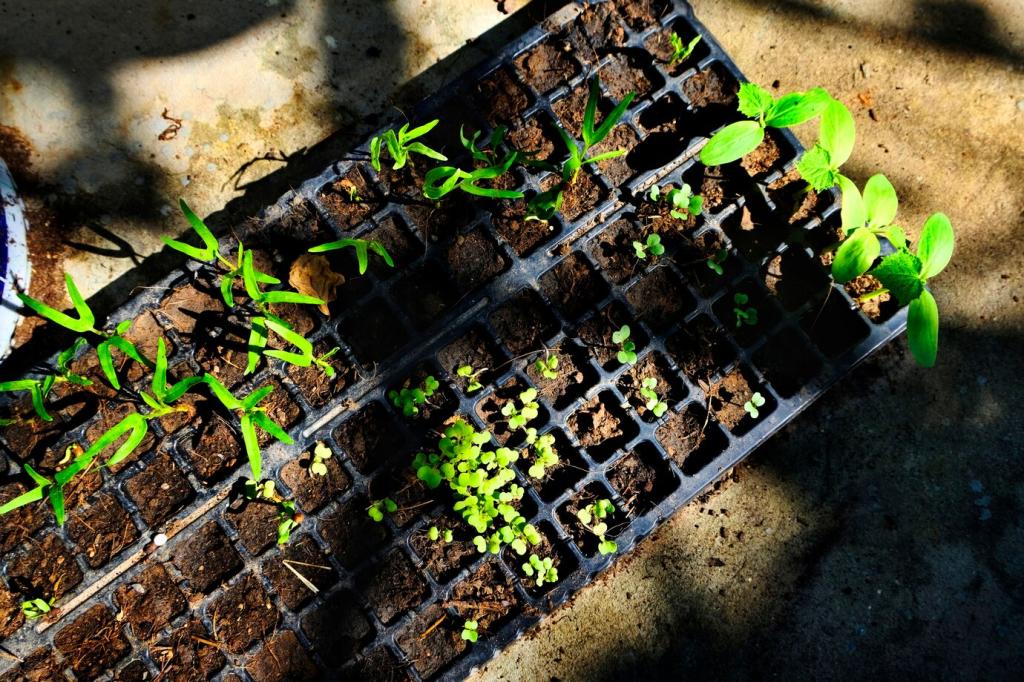Build a Balcony Compost Bin: Materials That Make It Work
Choosing the Right Container
Food‑grade plastic totes are light, affordable, and resist rust, making them perfect for balconies. Metal can be durable but heats quickly and may corrode. If you’ve tried both, tell us which survived your summer sun and winter rain best.
Ventilation and Aeration Essentials
A 1/4-inch drill bit creates breathable ventilation holes along the lid and upper sides. Add fewer, smaller holes near the base for drainage. Try a staggered grid pattern for even airflow—then tell us your preferred spacing for summer versus winter.


Carbon Materials to Keep Ratios Balanced
Shred non-glossy mail, paper towels, and box cardboard. These absorb moisture and add structure. Keep a small tote of shreds beside the bin for quick layering. What paper types break down best for you without clumping or sticking?
Carbon Materials to Keep Ratios Balanced
Compact coco coir bricks hydrate into fluffy carbon that stores cleanly indoors. A bag of dry leaves adds texture and aroma. Maya in Lisbon mixes fifty-fifty coir and leaves—and her balcony stayed fresh through a humid August.
Freezer‑safe scrap container
Keep food scraps in a small freezer tub or silicone bag to stop smells and fruit flies. Frozen scraps break down faster once added. What size freezer caddy fits your routine without hogging space next to the ice cream?
Coffee grounds and loose tea leaves
Used coffee grounds are easy to store and add nitrogen with minimal mess. Empty loose tea leaves are great—avoid plastic‑mesh bags. Ask your local café for grounds, then tell us how you dry or freeze them for easy dosing.
Moisture meter and the squeeze test helper
A pocket moisture meter plus a dedicated cotton rag help you master the squeeze test. Aim for a wrung‑out sponge feel. If you track readings, post your ideal range and how seasonal weather shifts your carbon needs.
Catch tray or plant saucer on a caddy
Set the bin on a sturdy plant caddy with wheels and a deep saucer to catch drips. This combo prevents stains and makes cleaning easy. After I added a tray, no more mysterious balcony spots—what size saucer works for you?
Absorbents: dry browns, coir, and cardboard
Keep a bucket of dry browns ready to soak up excess moisture after adding juicy scraps. Coir and shredded cardboard are standouts. Share your best quick fix when a rainy week turns the mix heavier than you’d like.


Activated charcoal pads tucked under the lid reduce odors during heavy greens weeks. Replace periodically for best results. If you’ve hacked a filter from an old range hood sheet, tell us how it performed through summer heat.

Pair fine mesh on vents with adhesive weatherstrip around the lid and rust‑proof screws. This seals gaps that invite gnats. When I finally upgraded hardware, night visitors vanished—what brand of weatherstrip held up outdoors for you?

A countertop caddy with a snug lid keeps smells contained before scraps reach the bin. Add a compost scraper to reduce mess. Post your favorite low‑odor caddy model and how often you empty it without disrupting your routine.
Hand trowel, scoop, and sturdy gloves
A narrow hand trowel and deep scoop move materials without spilling over railings. Durable gloves save knuckles from rough edges. Share a photo of your compact tool kit and the one item you never expected to love.
Compost thermometer and mini scale
A slender compost thermometer helps you understand activity without opening the bin for long. A mini kitchen scale improves carbon‑to‑greens consistency. Do you track temperatures on a notepad or app? Tell us what trends you’ve noticed.
Labels, marker, and airtight jars
Waterproof labels and a paint marker keep bins and supply tubs clearly marked. Airtight jars store biochar, coir, and filters neatly. If your labeling system finally ended mystery buckets, share your template so others can copy it.
Join our mailing list
